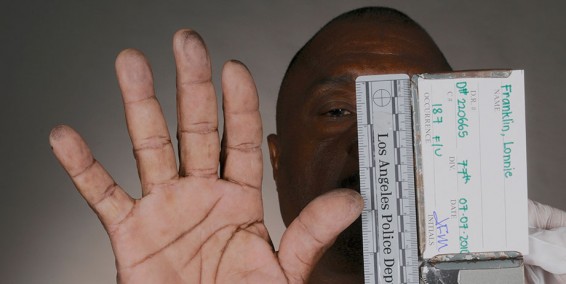“He’s only killing hookers.” Margaret Prescod, founder of the Black Coalition Fighting Back Serial Murders was told when speaking with a member of the LAPD why they didn’t tell the black community there was a serial killer on the loose in South Central Los Angeles.
September 23rd, 2014: Many communities had one. Norwood Park Township had John Wayne Gacy, Benedict Canyon had Charles Manson, Atlanta had Wayne Williams and between 1985 and 2010 South Central Los Angeles had Lonnie Franklin Jr. The epicentre of evil resided on West 81st Street and Western Avenue and to many in this economically challenged community few flags of the red variety were raised. But on July 7th, 2010, a community once steeped in fear now collectively exhaled in relief as two decades of death came to an abrupt end with his arrest.
At first blush, this foreboding narrative plays out like a whodunit with copious amounts of doubt affixed to Franklin’s guilt, primarily through firsthand account of friends and colleagues that knew him best. So how is this possible? How did such a string of missing and murdered women over two decades go virtually unabated? Award winning filmmaker and provocateur Nick Broomfield, in signature Nick Broomfield style drops himself into a maelstrom of mistrust, misinformation and conflicting timelines in pursuit of the real story behind the headlines. Strong themes of marginalized communities, municipal neglect and institutional racism all combine to aid and abet this killing spree. The disquieting and often violent legacy between the Los Angeles Police Department (LAPD) and the discarded community of South Central Los Angeles once again bubbles up along racial lines in Nick Broomfield’s ‘The Tale of the Grim Sleeper’.
The them-vs-us paradigm combined with Los Angeles’s socio-economic divide created chasms of suspicion that allowed the evil of a Lonnie Franklin Jr. accused of murdering 10 women to proliferate. Broomfield’s first person guerilla-style account unearths the underbelly of a community that is saturated in the ills of crack cocaine, black on black violence and missed opportunities. As an unassuming lily white British filmmaker treading in the fish-out-of- water territories of South Central Los Angeles, conventional filmmaking rules go out the door. His eyes on the ground and sometimes in his car came in the form of Pam Brooks; streetwise gravel voiced former crack addict and prostitute that could easily headline Comedy Night at the Apollo. Truth-be-told, I found myself doubling over in laugher (and feeling quite guilty given the subject matter) as Pam took the lead in conducting unconventional interviews with humor, insight and compassion. As the camera lingered, Pam approached each subject with the street tact and savvy of a sista with one foot still in the game which even disarmed Broomfield at times.
The one two punch of Pam’s idiosyncratic inquisitions and Broomfield’s camera forward expose and signature voiceovers created a compelling insiders tale of a community far beyond the short comings of Lonnie Franklin Jr. But it was these short comings and the litany of missing and murdered women that galvanizes viewers and whacks us back into the dark reaches of his depravity. Like slowly peeling back the layers of a Spanish onion, the sting in your eyes goes unabated as Broomfield slowly exposes the friends and confidents of Lonnie who confirm and reveal photos of his sexual proclivities and loosely implicate him in connection with some of the murdered women. This disturbing account slowly comes into focus as pictures of 185 women were found in Franklin’s home. Community activist in the form of Margaret Prescod, founder of the Black Coalition Fighting Back Serial Murders connected these murderous dots as early as 1988 but struggled to get traction with the LAPD. So it comes as a surprise to no one that the LAPD and former L.A. mayor Antonio Villaraigosa declined Broomfield’s requests for interviews. Their omission was deafening until it came time to embellish how their crack team of investigators solved this cold case. Broomfield shows with stark clarity the glaring inequalities as he reveals the LAPD knew as early are 1987 that there was a serial killer in the community.
Verdict: 4.5 / 5: The auteur behind the memorable and award winning documentaries like Aileen: Life and Death of a Serial Killer, Biggie and Tupac and Kurt & Courtney has done it again. Broomfield once again finds himself comfortable situated at the intersection of marginalized communities, serial killing and complicit authority. Broomfield’s ability to contextualize the most egregious situations helped frame a series of dour circumstances that have been long stuck in a murky state. Heightened anxiety was further created through a score that combined tickling piano keys in the vein of The Exorcist with a heavy dose of deep laboured rhythmic breathing just off camera. The Tale of the Grim Sleeper is as it should be, a straight up indictment on the social, economic and judicial injustices that have been plaguing American for hundreds of years. The fact that a Lonnie Franklin Jr. is allowed to fester and feed off his vices for two decades shows America is far from finding a solution to this problem.
Final Thought: Lonnie Franklin Jr. may be gone but he won’t be forgotten.
Genre: Documentary / Crime
Director: Nick Broomfield
Country: USA/United Kingdom
Year: 2014
Language: English
Premiere Status: International Premiere – TIFF
Runtime: 105 minutes
Producer: Marc Hoeferlin
Production Company: South Central Films Ltd.
Cinematographer: Barney Broomfield
Release Date: September 10th, 2014
Editor: Marc Hoeferlin, Joe Bini
Website: http://www.tiff.net/festivals/thefestival/programmes/tiff-docs/tales-of-the-grim-sleeper
T-Mak World: Toronto’s Site for Music, Movies and Culture www.tmakworld.com | Twitter | Facebook Get the T-Mak World Toolbar below to get all the info you need

